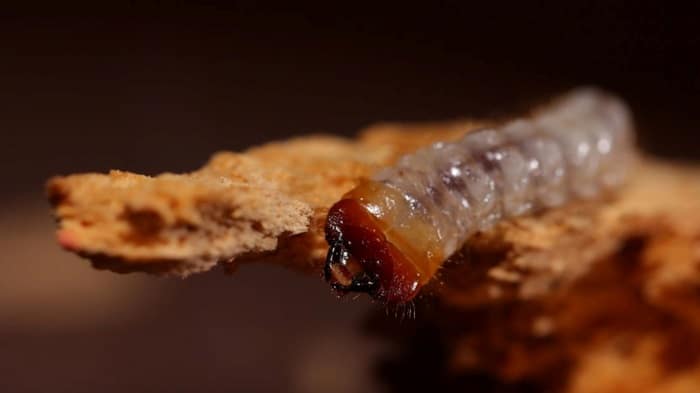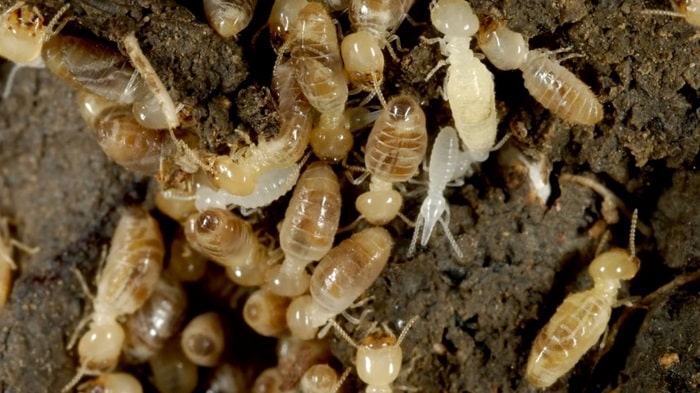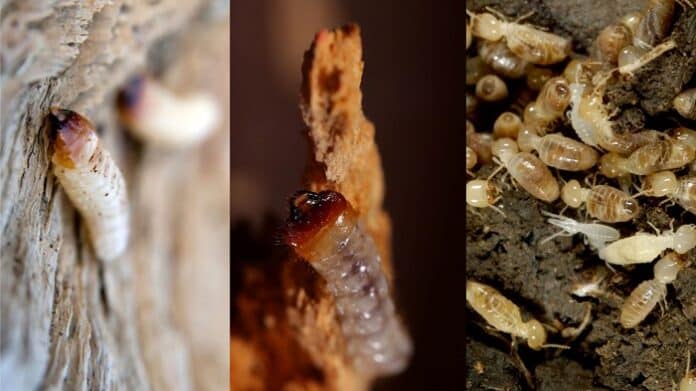When dealing with wood damage in your home, understanding the differences between woodworms and termites is crucial. While both woodworms and termites cause harm to wooden structures, they are not the same; woodworms are the larvae of wood-boring beetles, whereas termites are social insects that consume cellulose found in wood. Knowing this distinction can guide your approach to prevention and treatment.
Many people often confuse woodworms and termites due to their similar destructive traits. While woodworms tend to infest older, decaying wood, termites can attack both new and old wood. This difference in behavior affects how you address infestations and protect your property.
Recognizing the signs of the correct pest can save you time and money. Understanding these pests will enable you to take appropriate action and safeguard your home from further damage.
Identification and Differences

Identifying woodworms and termites requires close observation of their physical characteristics and behaviors. Each pest has unique traits that can help you determine what you’re dealing with and appropriate treatment options.
Characteristics of Woodworms
Woodworms are the larvae of various species of beetles, primarily belonging to the Anobiidae family. When they first hatch, these pests are typically about 1/4 to 1 inch long, with a creamy-white color. As they mature, they develop a hard, brown shell.
They create small, round exit holes in the wood, which can be a clear sign of their presence. You might also notice wood dust or frass around these holes, indicating recent activity. Woodworm infestations are often found in untreated or old timber, particularly furniture, wooden beams, and flooring.
Characteristics of Termites
Termites are social insects primarily classified into two groups: drywood and subterranean. They vary in size from about 1/4 inch to 1 inch long, generally with a soft, light-colored body. Their distinguishing features include straight antennae and a broad waist.
Termites typically consume wood from the inside out, leaving only a thin layer on the surface. Signs of an infestation include mud tubes along surfaces, wood that sounds hollow when tapped, and visible droppings known as frass. Unlike woodworms, termites often create nests within wood structures or underground.
Key Distinctions
When comparing woodworms and termites, consider their feeding habits and damage patterns. Woodworms primarily feed on the wood, while termites consume cellulose in wood, paper, and other plant materials.
Damage from woodworms is localized around the exit holes, whereas termites can cause extensive structural damage over time, often affecting large areas. Treatment methods differ; woodworm infestations may be controlled with wood preservatives or insecticides, while termite control methods often involve bait systems and professional extermination services.
Overall, recognizing these differences is crucial for implementing the proper control strategies.
Management and Treatment

Effective management and treatment of woodworms and termites are essential for protecting your property. Identifying the type of infestation can be the first step towards proper remediation. Taking professional assistance from woodworm or termite control services can help in finding the right solution. These experts can identify the extent of the problem and implement appropriate treatments. Due to their distinct behaviors and environments, different strategies are required for each pest.
Controlling Woodworm Infestations
To control woodworm infestations, start by thoroughly inspecting the affected areas. Look for small exit holes and powdery frass, which indicate active tunnels.
Treatment options include:
- Chemical treatments: Use insecticides specifically designed for woodworms. These penetrate the wood, killing larvae and preventing future infestations.
- Thermal treatment: Heating infested wood to a minimum of 140°F (60°C) for several hours can effectively kill woodworm larvae.
- Boric acid solution: Boric acid can deter and eliminate woodworms by affecting their digestive system.
Maintain a dry environment to prevent moisture accumulation, as woodworms prefer damp conditions.
Termite Eradication Strategies
Detecting termite infestations early is crucial for effectively combating them. Look for mud tubes and damaged wood as indicators.
Control methods include:
Chemical barriers: Applying termiticides around your property creates a barrier that prevents termites from entering. Bait systems: Using bait stations can attract and kill termites, disrupting their colonies over time. Fumigation: For severe infestations, tenting your home and using gas can completely eradicate termites from the structure.
Consider regular inspections and termite treatment by an experienced professional to stop infestations before they escalate. To reduce risk of infestation in the future, keep wood materials away from your home’s foundation.
Choosing The Best Pest Control Agency

When choosing a Pest Control Agency for woodworms or termites, prioritize experience and methods. Look for companies specializing in termite control, as expertise matters. Key factors include:
Reputation: Research online reviews. Check if the vendor is known for high-quality work and excellent customer service.
Techniques: Inquire about treatments like bait systems, liquid treatments, or fumigation.
Certification: Ensure the agency is licensed and certified.
During your consultation, ask about their experience and products
used, and request a written estimate. A professional agency like Critter Stop should provide a thorough inspection and detailed plan to protect your home from costly damage.






